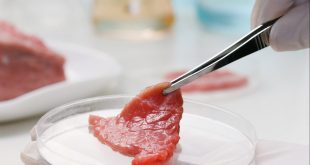By Richa Singh, Marketing Manager, Giraffe Foods
In today’s world, data analytics is transforming just about every part of human life, including the relationships built between businesses and consumers. Businesses are increasingly dependent on data insights to enhance their productivity, processes, and presence in the industry. In the last few years, the food and beverage industry, in particular, has been greatly benefitting from data-based technology, trends, and insights to make informed decisions.
From understanding consumer preferences to learning about their daily dietary routines and habits, data is providing science behind every action that a consumer takes. As a food and beverage brand, one tries to see data-based trendlines across different touchpoints, from weekly grocery shopping trips and cooking patterns to visits to drive-through restaurant and snacking preferences.
The availability of different data platforms like Mintel, Technomic, Datassential, and Euromonitor is providing big data analysis to foodservice operators and retailers to help them achieve various business objectives, including
getting ahead of competition;
menu innovations and elevations;
understanding product launch cycles;
tapping into hidden consumer needs; and
leveraging global flavours and foods.
Food manufacturers like ours, Giraffe Foods, a leading company in developing custom culinary sauces, dips, dressings, and marinades, are empowering business-to-business customers with consumer insights and food trends to help them understand the competitive landscapes, launch products to expand their consumer base, and expedite their sales volume. Food trends and consumer insights have become an increasingly popular and important part of the process across food segments, while operators understand that it’s crucial to make use of the available reports to validate their products launches. The most positive impact resulting from the trends and insights is the fact that today’s operators want to make informed decisions based on menu or customer basket analysis, or future trends like flavour adoption lifecycle and insights to invest in new products.
Data has made it possible for food professionals to become forward-looking, especially for food scientists, product developers, and food researchers. They are leveraging data analytics to develop various types of flavours, food formats, and textures that are going to trend in the upcoming years. An example of such innovation is the continuous improvements that are being made to the texture of plant-based proteins to close the gap between the perceived and actual meat-based protein food items, given that more and more consumers are likely to add alt-protein in their dietary habits. However, this cohort also does not want to compromise on the taste and textures.
In today’s business, each action taken by an organization or a consumer can be seen as a data point to analyze their behaviour and future preferences. Predictive analysis is helping consumer packaged goods brands, foodservice chains, and retailers to prepare their business goals for the next five to ten years. This, in turn, enables them to prepare their supply chain, inventory management, and operations, while enhancing their production capacities and capabilities as they can see into the future.
The food and beverage industries are also heavily dependent on other industries like raw materials, oil, and logistics, and thus, any volatility in these trades would also impact the food and beverage products’ pricing with a cascading effect on the end consumers. Food and beverage organizations are seeking support from data analytics to mitigate such type of risks attached to the larger economic forces. Data platforms are providing in-depth pricing analysis based on historical trends as well as looking into the current and future course of events to help businesses make smart decisions to better control the pricing for the end products. Therefore, data is helping both large and small businesses make calculated planning and forecasting choices.
Usage of data also plays a key role in the research and development and regulatory sensory insights fields too. Predictive analysis can help
determine shelf-life protection;
control quality and maintain standards; and
measure quality attributes, especially with the amount of alcohol in the brewing industry.
Industry professionals anticipate the role of data to only increase within the food and beverage industries for various reasons. As a result, more and more organizations will realize the incredible benefits that result from data trends and insights to enhance their food and beverage offerings. Businesses will depend on it to make their planning and forecasting decisions cost-effective, guarding from external economic factors. And food professionals will innovate products even before consumer needs become wants.
 Canadian Food Business
Canadian Food Business




